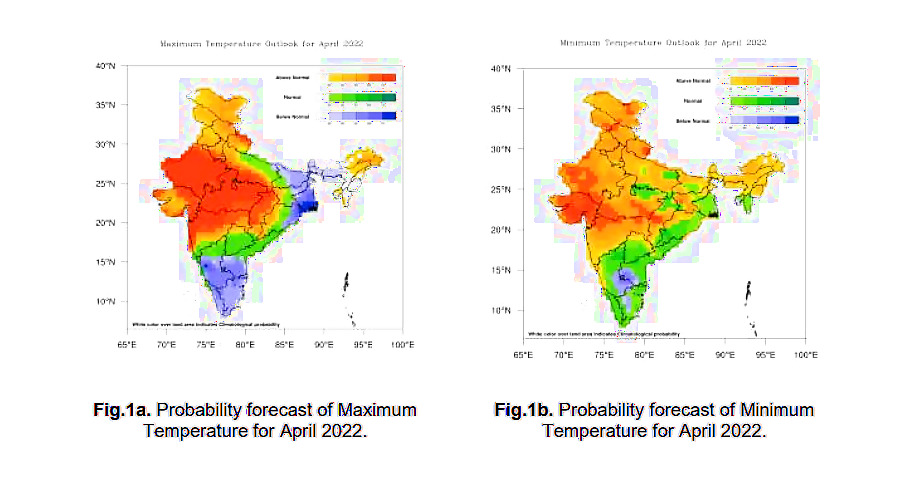
views
With a record two heatwaves in a span of four weeks, March was hotter than normal across most parts of central and north-western India. The scorching heat did not spare even the hilly areas of Jammu and Kashmir, Himachal Pradesh, and Uttarakhand where temperatures crossed 33 degrees Celsius. Now, the latest forecast suggests that April is also unlikely to bring any relief.
According to India Meteorological Department (IMD)’s seasonal outlook, above-normal temperatures are expected over most parts of northwest India and central India and some parts of the northeast states. Apart from the likelihood of heatwaves, the nights would be warmer too, with above-normal minimum temperatures.

To make it worse, the rainfall activity could also remain subdued over the region, with below-normal rains likely over Gujarat, Rajasthan, Madhya Pradesh, southern Haryana including Delhi, south Uttar Pradesh, northern parts of Maharashtra, and Chhattisgarh.
In contrast, south peninsular India, many parts of eastern India including Bihar, Jharkhand, Odisha, and West Bengal, and adjoining areas of northeast India could experience relief with normal to below-normal temperatures, as well as rains.
So, the rainfall averaged over the country, on the whole, is expected to be normal (89 -111% of the long-period average).
March mayhem
India recorded two heatwaves in March, the first from the 11th to 18th, and the second from the 26th onwards, which commenced from coastal areas of Saurashtra-Kutch and swept through most parts of central India, southern Haryana, Uttar Pradesh, up till Chhattisgarh, not sparing the sub-Himalayan range. The temperatures crossed 40 degrees Celsius at several places and remained so for consecutive days.
“It was completely in contrast to 2021, when the heatwave was not so severe, despite above-normal temperatures. It was definitely warmer than usual,” said M Mohapatra, director-general of meteorology, IMD. “Apart from other climatic conditions, a lot of it was because of the deficient rains. Unlike last year when the rainfall deficit stood at 42% in March, this year, the country saw a rainfall deficit of 72% on the whole, and it was 89% for northwestern India.”
Heatwaves are commonly seen in May during the pre-monsoon season. While their occurrence in March isn’t rare, they are not as severe as they have been this year. “This month, we saw several weather stations recording temperatures that exceeded previous records. The rains were below normal, the western disturbance activity was subdued, and the wind pattern as such, that warmer winds were blowing from south Pakistan towards the Indo-Gangetic plains,” said Mohapatra.
Current heatwave to subside after April 1
According to the weather department, the current heatwave spell sweeping northwest, central and western India is likely to continue during the next four to five days. Especially over Gujarat and Maharashtra, where there is likely to be a gradual rise in maximum temperatures by 2-3 degrees during the next three days.
However, its intensity will reduce over northwest India starting April 1, with temperatures expected to fall by about 1-2 degrees Celsius.
Favourable ocean conditions
According to the weather department, the current ocean conditions suggest that La Lina is likely to prevail over the Pacific Ocean at least until June, and may continue after that too with a 55% probability. La Lina is essentially an oceanic phenomenon characterised by the cooling of the water in the equatorial Pacific Ocean, which causes certain weather changes over the Indian subcontinent, and favours the southwest monsoon. Another ocean phenomenon called Indian Ocean Dipole is also neutral and likely to remain so for now and may turn negative during the arrival of the monsoon.
La Nina is favourable for the Indian subcontinent, especially the southwest monsoon, which arrives in June. The IMD is likely to announce the forecast date for the onset of the summer monsoon in mid-April.
Read all the Latest News India and Breaking News here



















Comments
0 comment